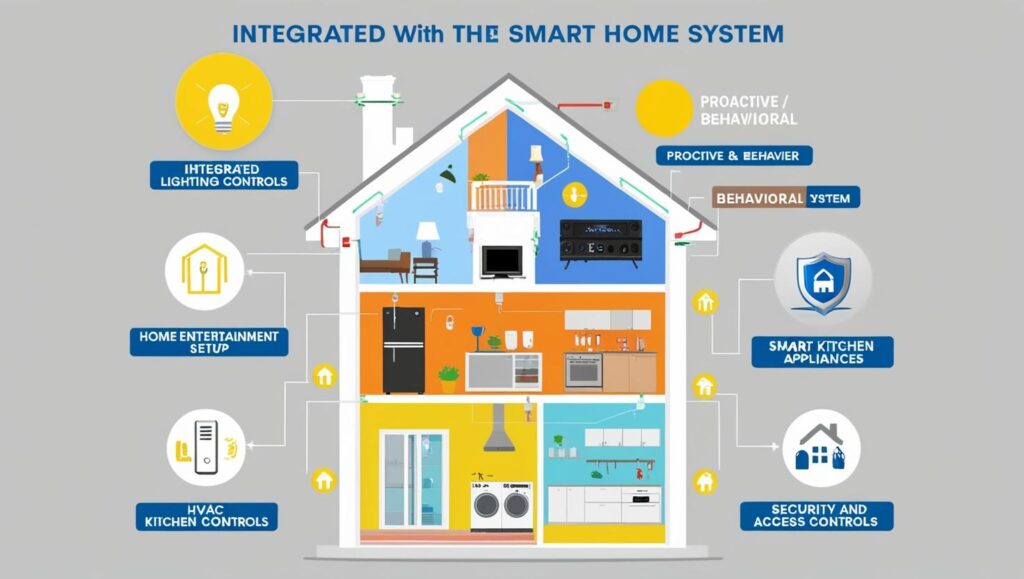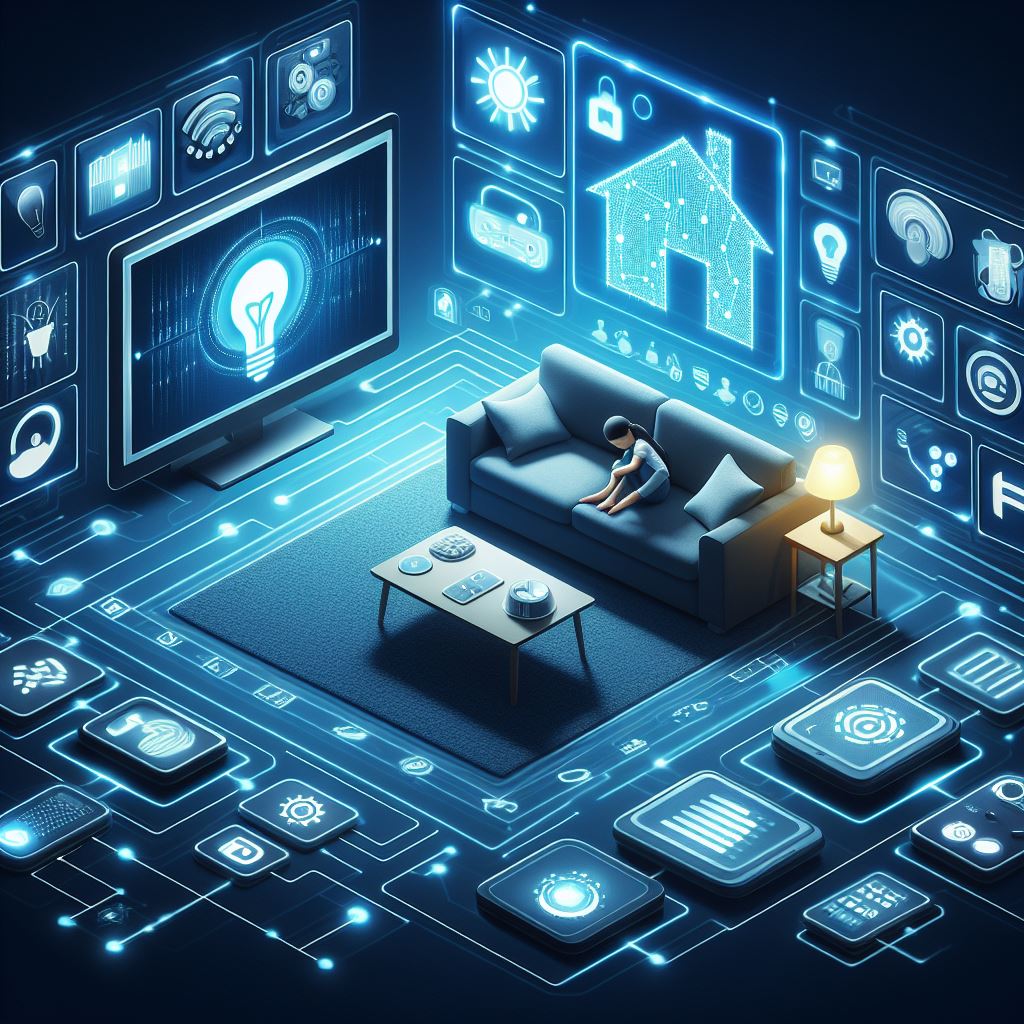The global smart home market growth is undergoing a rapid transformation driven by a convergence of advanced technologies and rising consumer expectations for convenience, security, and energy efficiency. Once considered a niche luxury, smart homes are now becoming a mainstream reality, fueled by innovations in artificial intelligence (AI), the Internet of Things (IoT), voice interaction, and advanced security systems. These emerging technologies are not only enhancing user experience but also redefining how we interact with and manage our living spaces.

AI and Machine Learning in Smart Homes
Artificial intelligence and machine learning are revolutionizing smart home functionality by enabling devices to learn from user behavior and adapt accordingly. AI powers intelligent automation systems that manage lighting, climate, entertainment, and appliances based on usage patterns and preferences. For example, a smart thermostat can learn a household’s schedule and adjust temperatures to optimize both comfort and energy savings.
Machine learning algorithms also drive predictive analytics, allowing systems to anticipate user needs before actions are taken. Over time, smart home platforms become more intuitive, offering personalized routines such as adjusting the lighting based on mood or automatically playing music when a person enters a room. This intelligence makes smart homes more responsive and aligned with user lifestyles, and it continues to improve with every interaction.
The Role of IoT in Smart Home Systems
The Internet of Things (IoT) forms the backbone of smart home infrastructure. Through interconnected devices and sensors, IoT enables seamless communication across different systems—from lighting and heating to refrigerators and security cameras. This networked ecosystem allows users to control and monitor home functions remotely via smartphones or voice assistants, providing unmatched convenience and control.
IoT’s impact extends beyond convenience; it also enhances efficiency and sustainability. Smart appliances can track energy consumption, water usage, and maintenance needs, providing real-time feedback to homeowners and allowing for better resource management. The interoperability of IoT devices is also improving, driven by the development of common communication standards like Matter, which aims to unify smart home device compatibility across brands and platforms.
The global smart home industry was valued at USD 84.5 billion in 2024 and is projected to reach USD 116.4 billion by 2029; it is expected to register a CAGR of 6.6%
Download PDF Brochure @ https://www.marketsandmarkets.com/pdfdownloadNew.asp?id=121
Voice Assistants and Their Impact on Smart Homes
Voice assistants such as Amazon Alexa, Google Assistant, and Apple Siri have become central to the smart home experience. They serve as intuitive, hands-free interfaces that simplify interactions with connected devices. Users can issue voice commands to control lights, adjust thermostats, stream content, or receive real-time updates on weather and news—all without touching a device.
Voice control also makes smart homes more accessible, particularly for elderly users or those with mobility limitations. As natural language processing (NLP) technology evolves, voice assistants are becoming more conversational, context-aware, and capable of handling complex tasks. This improvement is solidifying their role as digital home managers, integrating deeply into the daily routines of users.

Security Solutions in the Smart Home Environment
Security is one of the top drivers of smart home adoption. Emerging technologies in this space are enhancing how homeowners protect their properties, families, and data. Smart security systems now include facial recognition cameras, motion-detecting lights, video doorbells, and real-time mobile alerts. Many systems can differentiate between routine events and potential threats, reducing false alarms and improving response times.
AI and machine learning further enhance security by enabling adaptive monitoring, learning patterns of activity and identifying unusual behavior. Integration with IoT ensures that security systems are part of a broader home automation network, allowing for coordinated responses like locking doors, turning on lights, and notifying authorities during emergencies. As cybersecurity concerns grow alongside connectivity, manufacturers are also investing in more robust encryption and data protection measures to ensure user privacy.
Innovations Shaping the Future of Smart Homes
The smart home market continues to evolve rapidly with emerging technologies that promise even greater integration, automation, and sustainability. Key innovations include smart mirrors with health monitoring features, AI-driven cooking assistants in kitchens, and adaptive lighting systems that mimic natural daylight cycles to support well-being.
Another promising trend is the development of ambient intelligence—environments embedded with sensors and AI that respond to human presence and preferences without explicit commands. Smart homes of the future may offer seamless interactions where the environment anticipates needs automatically, such as drawing the blinds when the sun sets or suggesting a meal plan based on dietary goals.
Integration with renewable energy systems, such as solar panels and home battery storage, is also becoming more common. These solutions work in tandem with AI and IoT to optimize energy use, reduce reliance on the grid, and support sustainability goals.
Conclusion: The Smart Home as a Living Ecosystem
The smart home is no longer a futuristic concept—it’s a dynamic, living ecosystem that continues to evolve with each technological breakthrough. From AI and machine learning to IoT and voice-controlled environments, the innovations shaping smart homes are making daily life more personalized, efficient, and secure. As these technologies mature and become more accessible, the smart home will move beyond convenience to become a critical pillar of modern living, aligned with the broader push toward digital transformation and environmental sustainability.
About MarketsandMarkets™
MarketsandMarkets™ is a blue ocean alternative in growth consulting and program management, leveraging a man-machine offering to drive supernormal growth for progressive organizations in the B2B space. We have the widest lens on emerging technologies, making us proficient in co-creating supernormal growth for clients.
The B2B economy is witnessing the emergence of $25 trillion of new revenue streams that are substituting existing revenue streams in this decade alone. We work with clients on growth programs, helping them monetize this $25 trillion opportunity through our service lines – TAM Expansion, Go-to-Market (GTM) Strategy to Execution, Market Share Gain, Account Enablement, and Thought Leadership Marketing.
Built on the ’GIVE Growth’ principle, we work with several Forbes Global 2000 B2B companies – helping them stay relevant in a disruptive ecosystem. Our insights and strategies are molded by our industry experts, cutting-edge AI-powered Market Intelligence Cloud, and years of research. The KnowledgeStore™ (our Market Intelligence Cloud) integrates our research, facilitates an analysis of interconnections through a set of applications, helping clients look at the entire ecosystem and understand the revenue shifts happening in their industry.
To find out more, visit www.MarketsandMarkets™.com or follow us on Twitter, LinkedIn and Facebook.
Contact:
Mr. Rohan Salgarkar
MarketsandMarkets™ INC.
1615 South Congress Ave.
Suite 103
Delray Beach, FL 33445
USA : 1-888-600-6441